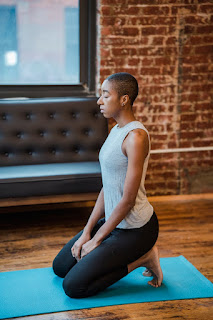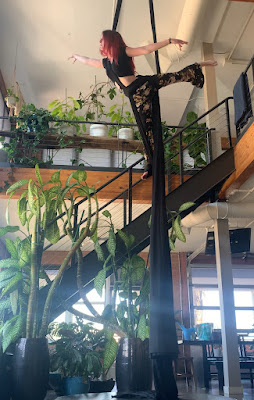How to Yoga Meditation: A Step-by-Step Guide for Serenity and Focus
Ready to embrace the quiet focus that yoga meditation offers? With clear instructions and a no-fuss approach, this guide uncovers exactly how to start your yoga meditation. You’ll learn the nuts and bolts, from setting up your meditation corner to mastering breath control and key postures. Incorporating ‘how to yoga meditation’ into your routine can unlock a sense of calm and clarity. Prepare to dive into a practice that nurtures both body and spirit—without any distractions.
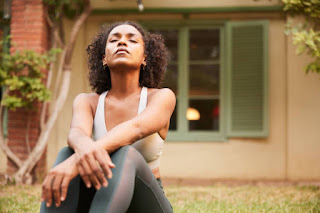
Key Takeaways
- Yoga meditation is a time-honored practice that aids in uniting mind, body, and universal consciousness, transcending religious and cultural boundaries to offer numerous health benefits such as stress reduction and improved focus.
- Preparations for yoga meditation involve creating a conducive space, wearing comfortable clothing, and setting personal intentions, all of which can significantly enhance the quality and effectiveness of the meditation experience.
- Diverse yoga meditation techniques and poses, paired with consistent breathwork, deepen meditation practice and reinforce mental and physical wellness, particularly when incorporated into a regular and disciplined routine.
Understanding Yoga Meditation
Yoga, derived from the Sanskrit word ‘Yuj’, means unity or joining and refers to the harmonious relationship between mind and body, individual consciousness, and Universal Consciousness. This ancient practice predates religions and belief systems with its roots in Adiyogi as recognized by yogic tradition. Its dissemination is attributed to Saptarishis who spread it through archaeological evidence found in the Indus Saraswati valley. Yoga has been systematically studied over time including texts like Patanjali’s Yoga Sutras which were influenced by teachings such as Buddha’s Eightfold Path as well as different forms of yoga outlined in the Bhagavad Gita.
The core objective of yoga meditation remains unification of individual consciousness with the Universal Consciousness resulting in balance between one’s mental state and physical being while ultimately achieving liberation. However, it must be noted that this holistic practice transcends religious beliefs making it universally accessible for people seeking stress reduction benefits along with improved concentration levels and increase health overall wellness regardless of their personal faiths.
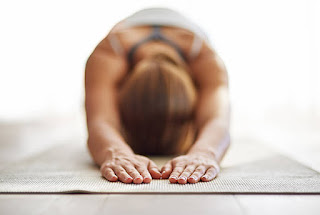
Preparing for Your Yoga Meditation Practice
Before starting your yoga meditation practice, it is advantageous to prepare in several ways. Creating a suitable environment for meditation, wearing comfortable clothing and establishing intentions are essential steps towards achieving a successful experience.
Let’s examine each of these preparations more closely.
Firstly, constructing the perfect space for mediation can greatly enhance its effectiveness. Choosing appropriate attire that promotes comfort during the session is crucial. Lastly, setting clear intentions before beginning the yoga meditation journey can bring focus and purpose to one’s practice.
Finding the Right Space
A suitable space for yoga meditation should have a sense of openness and tranquility. It is important to include natural light, neutral tones, and minimal decoration in order to maintain a peaceful atmosphere. The use of calming colors like blue, green, purple or pink can enhance the feeling of calmness along with incorporating elements such as living walls or water features for a Zen-like environment. Even without access to natural light, these design choices can create an ideal setting for practicing body scan meditation.
When creating your own personal meditation space, it’s essential that you incorporate items and textures that are personally meaningful to you in order to ensure relaxation during practice sessions. This includes things which spark happiness when viewed/used/felt physically by yourself. Suggestions may be cushions/chairs/tapestries/candles/lighting/plants/spiritual articles/a clean area. As long as there tends to be no interference/distraction.
The goal is always establishing just the right ambiance so eliminate clutter/disarray/noise/practice-room ambient blockages & optimize focus! A comfortable seating option/mild lighting/goal-appropriate notes on spare-use-tranquil objects/playful decorative outlets/easy visibility affirmation points/altered art-purpose-prepared noisemaker restraint tools!
Wearing Comfortable Clothing
A successful yoga meditation routine requires a combination of mental and physical aspects, which also involves choosing the appropriate attire. Comfortable clothing is essential as it allows for unhindered movement and flexibility, enhancing the effectiveness of your practice. Tight yet flexible outfits like yoga leggings eliminate distractions and offer necessary support during different poses without sacrificing comfort. The right fit and comfort level of your clothes can significantly enhance confidence levels while aiding in maintaining focus on your practice.
When selecting garments to wear during yoga meditation sessions, opt for materials that are breathable and moisture-wicking to regulate body temperature throughout varying intensities of the exercise. It’s important to choose tops with modest cuts that provide adequate coverage to avoid disruptions or discomfort while practicing. For women, built-in bras can add extra support if needed, but remember not to let any worries about clothing interfere with being present in your practice – stay focused!
Setting an Intention
Creating an intention during a yoga practice is similar to making a small resolution, bringing awareness towards developing a specific quality or virtue. This can involve embarking on a journey towards adopting new ways of thinking or setting the course for personal growth and healing. It’s important to understand that intentions are not the same as goals – they should be present in our words, thoughts and actions rather than being something we aim to achieve.
Having an altar in your meditation area can aid with setting intentions by providing a focal point for meaningful objects that hold spiritual significance. Customizing this space with items that resonate with you helps cultivate the mindset necessary for aligning with your intended purpose. Remember that these intentions don’t have to remain confined within just yoga sessions. They can also influence daily behaviors and responses outside of it.
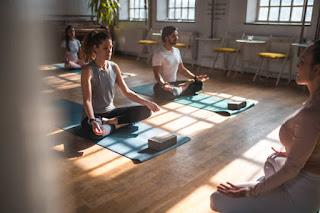
Yoga Meditation Techniques
Now that we have finished all the necessary preparations, it is time to delve into the core of yoga meditation: the techniques. There are numerous ways to meditate, but three main practices stand out in particular: mindfulness, mantra repetition and visualization. Each method offers its own specific advantages and approach. Let us examine each one individually.
Mindfulness in Yoga Meditation
Mindfulness meditation, a form of yoga practice, involves focusing on the present moment by paying attention to one’s breath and bodily sensations. The goal is to develop an awareness of thoughts and feelings without judgement. This type of meditation can positively impact overall health in several ways, such as reducing stress, calming anxiety and depression, improving physical well-being, and enhancing sleep quality.
The techniques used for mindfulness include concentrating on breathing patterns or body movements while acknowledging any arising thoughts (known as noting meditation). By directing our focus with non-judgmental attitude during mindful yoga practice sessions that are not limited to traditional settings but adaptable anywhere at anytime, provides us with great mind-body connection opportunities leading to inner peace.
Mantra Meditation in Yoga
Another powerful yoga meditation technique is mantra meditation, an ancient practice that focuses on a specific sound, word, or phrase, often with spiritual significance, to aid concentration and focus during meditation. The correct pronunciation of mantras is considered crucial in traditional mantra practice as it helps connect with universal consciousness and the divine.
Mantra meditation can be practiced either silently or aloud, providing benefits like improved concentration, reduced stress, and positive outlooks. Exploring different mantras and practicing consistently can help you experience the positive effects of mantra meditation. It’s a beautiful way to train your mind to focus and to generate mental health benefits.
Visualization in Yoga Meditation
Visualization meditation uses the power of imagination to create mental images or scenarios that can support relaxation, focus, and spiritual connection during yoga practice. This technique involves incorporating elements like light, nature’s beauty, geometric patterns, deities or gurus into your meditation experience. A skilled meditation teacher can guide you through various techniques such as color breathing and loving-kindness exercises to deepen your practice.
The use of visualization in yoga meditation offers a range of styles that promote inner peace and help achieve specific goals. It encourages individuals to turn their attention inward instead of focusing on external distractions. With regular guided visualizations from an experienced instructor, one can explore desires and find balance within the body by working with chakras.
Incorporating different visualization methods while practicing yoga mediation has many benefits including enhancing concentration levels and manifesting intentions effectively.It is a powerful tool for achieving serenity.
Integrating Breathwork (Pranayama)
Pranayama, also known as breathwork, is an essential element of yoga meditation that has a profound impact on both mental and physical health. It plays a significant role in promoting overall well-being.
Incorporating different types of Pranayama into your yoga practice can greatly enhance the benefits of meditation. By exploring these techniques, you will be able to experience their powerful effects on enhancing mind-body connection during your regular routine of yoga and mediation.
Ujjayi Pranayama
Ujjayi Pranayama, also known as the ‘victorious breath’ or ‘ocean breath,’ helps to calm the mind by directing focus towards the breathing pattern and reducing distraction from random thoughts during meditation. It’s a simple yet powerful technique that involves inhalation and exhalation through the nose with the throat slightly constricted to produce a soft hissing sound, controlled by the diaphragm.
The aim of Ujjayi Pranayama is to make inhalations and exhalations equal in length, fostering a tranquil and balanced state of being. It’s a fantastic way to anchor your mind into the present moment, making it an essential tool for enhancing your yoga meditation practice.
Alternate Nostril Breathing (Nadi Shodhana)
Alternate nostril breathing, also known as Nadi Shodhana, is a simple yet powerful technique that can improve physical and mental well-being. By focusing on one nostril at a time while breathing, this practice helps to induce relaxation and lower stress levels.
Regularly practicing Nadi Shodhana has numerous benefits for the body and mind. It activates the relaxation response in the body, which reduces overall stress activation. With consistent use over time, it promotes balanced functioning of the nervous system resulting in a decreased stress response. Incorporating this into your yoga meditation routine can help create a calm and centered state of mind before or after engaging in other forms of meditation exercises.
Diaphragmatic Breathing
Another beneficial pranayama technique for meditation is diaphragmatic breathing. This involves expanding the stomach during inhalation and contracting it during exhalation to promote deep, efficient breaths. Not only does this enhance your yoga meditation practice, but it also contributes to overall health.
To its benefits in enhancing one’s yoga meditation practice, diaphragmatic breathing can improve gastrointestinal health by providing a massaging effect on internal organs. It may even help alleviate symptoms like abdominal pain and bloating. To learn this technique:
- Inhale through the nose for 4 seconds.
- Hold for 2 seconds.
- Exhale slowly from the mouth for 6 seconds.
- Repeat this sequence for 5-15 minutes.
With regular practice, diaphragmatic breathing will become second nature and can be incorporated into various activities such as sitting, standing, walking or driving – Improving its potential impact on both physical and mental wellbeing.
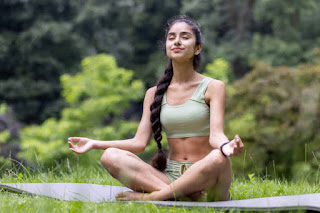
Yoga Poses for Meditation
Once the breathing techniques have been mastered in yoga meditation, it is time to explore the physical aspect of this practice, yoga poses. These poses can be categorized into three types: seated, standing, and restorative.
It is important to carefully consider each pose as they all serve a different purpose during meditation. The first type is seated positions which are perfect for those who prefer stillness and focus while meditating. Standing postures require balance and strength, which helps energize the body while calming the mind through meditation.
Seated Yoga Poses
Hatha yoga poses done while sitting provide a steady and comfortable base for practicing meditation. Sukhasana, also known as Easy Pose, is an uncomplicated cross-legged position recommended for those who struggle with more advanced seated postures during long meditations. Lotus pose (Padmasana) is a traditional way to sit when meditating that helps calm the mind and balance energy centers.
If you are not able to do full Lotus Pose comfortably, Half-Lotus Pose (Ardha Padmasana) offers similar advantages without requiring as much flexibility. It’s important to choose a seated yoga posture based on personal comfort and ability to maintain good posture in order to modify or adapt it if needed so your focus stays strong during peaceful meditation practice.
Standing Yoga Poses
Incorporating standing yoga poses, such as Tadasana, Vrksasana and Trikonasana, can greatly enhance your meditation practice. These postures provide a solid foundation for balance and grounding to promote calmness and focus.
Aside from being the fundamental pose that sets the stage for other standing positions, Mountain Pose (Tadasana) also acts as an excellent starting point for meditation. Another beneficial posture is Tree Pose (Vrksasana), which focuses on strengthening both legs and core while aiding relaxation of mind.
For Support during meditation sessions, you might want to consider incorporating walking meditations or exploring different techniques like Warrior I & II (Virabhadrasana I & II). These powerful stances not only increase concentration but also energize through building up strength in arms and lower body. Similarly effective at improving mental equilibrium is Triangle Pose (Trikonas).
Restorative Yoga Poses
Concluding our discussion on yoga poses for meditation, we have the restorative category that is ideal for cultivating relaxation and focus during this practice. One such pose is Balasana or Child’s Pose, which can induce a peaceful state of mind and aid in centering one’s thoughts before beginning a session of yoga meditation.
Viparita Karani or Legs-Up-The-Wall. Pose is another valuable addition to your repertoire as it aids in calming the mind while also improving blood circulation and reducing swelling in the lower body. It proves particularly beneficial when practiced prior to starting meditation.
Integrating restorative poses into your regular routine can significantly enhance your ability to unwind and concentrate during your sessions of yoga mediation. So make sure you include them while building up upon other techniques employed during this rejuvenating practice.
Establishing a Consistent Yoga Meditation Routine
Once you have familiarized yourself with the techniques and poses, the next step is to establish a regular yoga meditation routine. Consistency is vital in any practice, including yoga meditation. But how can one ensure that they stick to their routine?
To maintain a steady meditation practice, it is important to prioritize values and discipline over changing emotions. Here are some tips for establishing a consistent mediation habit.
- Create a ritual by meditating at the same time every day in the same location.
2.Remeber that it takes at least three months of continuous effort before a new habit becomes established.
3.Varying your techniques can keep your practice interesting and prevent getting used to one specific technique.
By following these suggestions, you can cultivate an ongoing meditation schedule and reap its benefits.
Sustaining consistency could also be supported by scheduling daily sessions at fixed times along with reminders. Keeping track of progress through maintaining a journal where reflections are noted down would help as well.By systematically recording each session, you will be able to see improvements made and stay motivated towards achieving goals set forth during this process.This way, the visual representation of achieved milestones will serve as an additional encouragement to remain committed to the practice.
Summary
Yoga meditation has been around for ages and boasts a wide range of benefits, such as stress management and improved concentration. By comprehending its origins and intent, adequately preparing yourself, mastering diverse techniques, incorporating proper breathing methods, and performing different yoga poses, you can begin your own fruitful journey in meditation.Remember to maintain consistency by establishing a regular routine that will greatly enhance your practice.Here’s to attaining tranquility and sharpened focus on your path towards success through meditation!
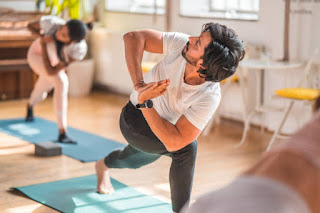
Frequently Asked Questions
What is the yoga technique of meditation?
Meditation, an integral part of yoga practice, utilizes Kriya yoga to regulate the life force or prana within the body. This results in improved mental and physical well-being for individuals who regularly engage in this technique.
What are the 7 steps of meditation?
There are 7 simple steps to practicing meditation. It involves certain techniques and can easily be incorporated into one’s daily life.
Do you do yoga or meditation first?
Beginning with yoga is highly recommended as it effectively prepares both the body and mind for meditation. The gradual shift from physical activity to stillness sets a conducive atmosphere for a more advantageous and peaceful practice of mindfulness.
What yoga helps with meditation?
One of the yoga poses that can be utilized for meditation is called Shavasana or Corpse Pose. This particular pose may prove to be difficult, but its advantages are noteworthy as it requires a peaceful state of mind and body while staying alert.
What are the three primary techniques of yoga meditation?
Yoga meditation involves three main techniques: mindfulness, mantra, and visualization. These practices can be combined to create a well-rounded experience during your meditation sessions.
To enhance your overall practice of meditation, consider incorporating these three fundamental methods into your routine. With the use of mindfulness, chanting mantras.



